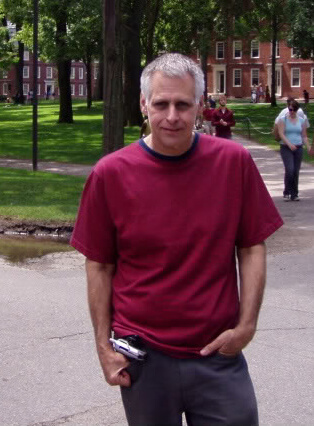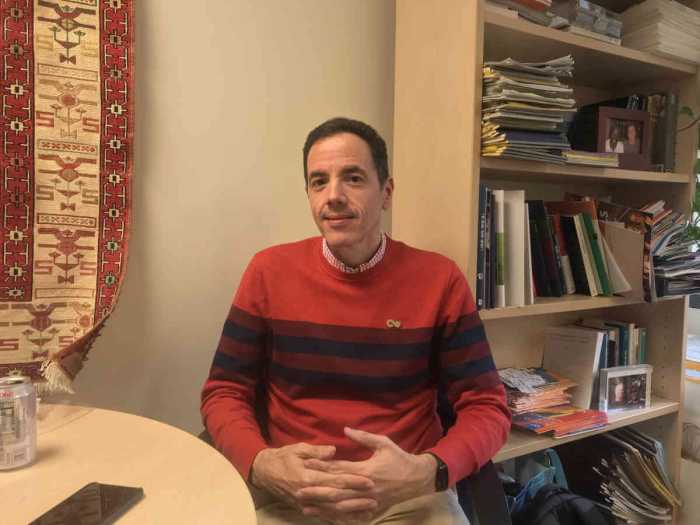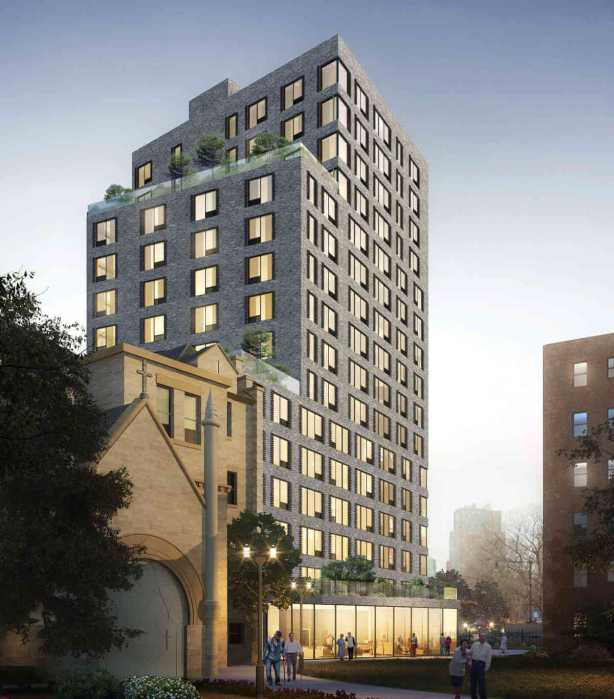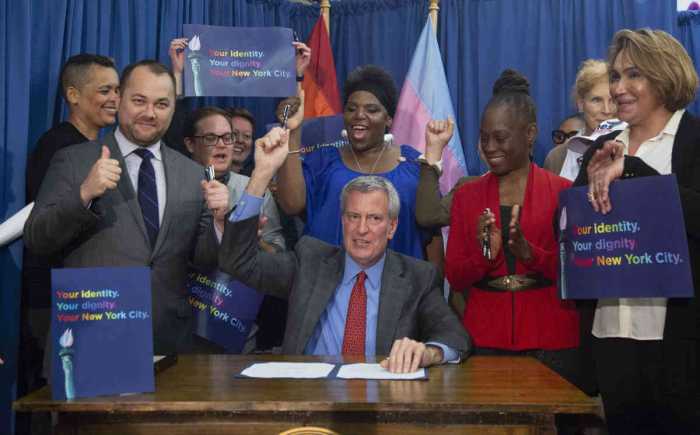SAGE member and longtime activist Jerry Hoose.
For the second time in two years, older gay people who have had a kind of clubhouse for 30 years at the LGBT Community Center had to mount a campaign to retain their SAGE Room turf in Greenwich Village as the Center reconfigures and seeks greater control over its space following major renovations. After an outcry from the SAGE members, an agreement was reached between SAGE –– Services and Advocacy for GLBT Elders –– and the Center on September 16 to extend a lease on a new room the group uses.
Veteran gay activist Jerry Hoose –– a founder of the Gay Liberation Front in 1969, an organizer of the first Pride March in 1970, and a participant in the SAGE Room since the beginning –– led a Save Our Space campaign to retain a home at the Center, the group’s old first-floor room having been lost to an expanded lobby. They now meet in the Center’s renovated room 207, but issues of control of the space became contentious.
“It is unconscionable that we have to fight to keep the SAGE Drop-In for Seniors at the LGBT Center,” the group said in a statement last week. “These are the very places that would not exist without early activists risking their lives, jobs, and family for LGBT rights.”
Future of SAGE clubhouse on West 13th Street resolved in wake of longtime members’ concerns
Efforts to have SAGE share the room with other Center events was a key point of disagreement.
Hoose said, “Our campaign is for SAGE to have the sole lease on the room. There was never a problem when the Center wanted to use it for other purposes. They went to Tom Weber [director of constituent services] at SAGE. If the Center owns half the room, it’s not the SAGE Room anymore.”
Prior to the September 16 agreement, Rob Wheeler, the Center’s chief operating officer, said, “We want to change that dynamic so that the room is fully utilized. We really value them being there, but we would like to set a schedule.”
Hoose countered, “We want sole ownership. As it is, if we want to stay until 10 p.m. when the Center closes, we can. Sometimes we decide to have a Christmas or New Year’s party the day before and we can.” While Wheeler said that in the past “the room sat empty a lot,” Hoose said that “there are so many empty rooms in the Center.
Michael Adams, executive director of SAGE, made it his first order of business back from his sabbatical on September 15 to meet with those who frequent the SAGE Room at the Center.
“There are issues and details that have to be figured out,” he said that day, “but the Drop-In Center is not fighting for its life. There is no question that the space is going to continue.”
A deal was worked out the following day when he and Center representatives met with the SAGE members. “SAGE will continue to have exclusive lease on the space, no rent increase, SAGE will make space available to the Center during evening hours when SAGE constituents aren’t using it,” Adams wrote in an email.
He wrote that SAGE’s “constituents were happy with everything (per Jerry Hoose, the agreement SAGE reached with the Center was 95 percent on target)” and that after the meeting “SAGE and the Center discussed further and have agreed that there will be a fridge in the room. So the remaining issue has been resolved.”
Hoose did indeed say he was “95 percent pleased” and thought the deal “was the best we could do.” He said he remained concerned that they are not being allowed to bring their furniture into the new room, but was assured that “comfortable furniture” would be provided. In most meeting rooms in the Center, people sit on metal folding chairs, but the SAGE room already has cushioned chairs with arms.
In the wake of the agreement, the Center’s Wheeler wrote in an email, “We love our long-standing partnership and mutually supporting relationship with SAGE — the community room connects the two organizations, and we really value it and the people who attend.” While Hoose expressed concern that the SAGE lease was “changing” from yearly to month-to-month, Wheeler said that has been the arrangement since 2012.
Carol Demech, a SAGE member and chair of SAGE’s Advisory Council, emphasizing the importance of keeping the Center space, said it was vital for members “in their 80s and 90s from the Village who can’t get up to 305,” the address on Seventh Avenue at 28th Street where SAGE’s main offices and services are.
SAGE had earlier funded someone to host the SAGE room, but that was stopped several months ago.
Tracy Welsh, deputy director of SAGE, said that SAGE also “is trying to get programs going in the Bronx, Brooklyn, Staten Island, and Harlem. Some of these boroughs never had LGBT elder services let alone welcoming space.” (SAGE’s plans for additional sites, funded by the City Council in the budget for the year that began July 1, will be profiled in the October 2 issue of Gay City News.)
The Save our Space leaflet ends with, “If people think the activists in the 1960s and 1970s who fought for LGBT rights were fierce when they were young, they have no idea how fierce we can be as Seniors.”
“I deeply respect their passion,” said Adams. “We want the Center to be an age-friendly place.” According to Wheeler, the Center partners with SAGE on intergenerational programming, including an arts program and another where young people provide technology and computer assistance to older people.
“I hope we’re not going to have to continue to fight,” Hoose said. “If we hadn’t fought for the last month, we wouldn’t have gotten this deal.”





































